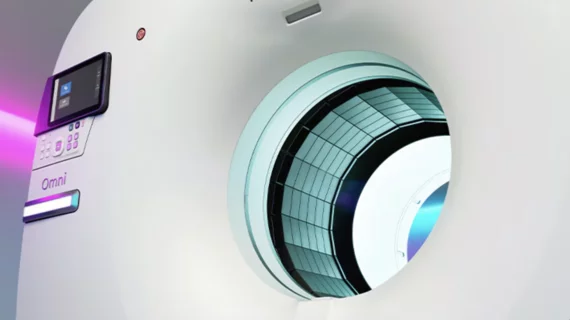GE HealthCare moves PET/CT scanner production to United States
GE HealthCare is now manufacturing the all-in-one Omni Legend PET/CT scanner at its new production facility in Waukesha, Wisconsin. This represents the first time the system has ever been manufactured in the United States.
In addition, the company announced, the 100th U.S. install of the Omni Legend system is scheduled to take place near Waukesha at UW Health Eastpark Medical Center in Madison, Wisconsin.
GE HealthCare first launched the Omni Legend PET/CT system in October 2022, highlighting key improvements in sensitivity, efficiency, radiation dose and patient comfort. The system is also powered by advanced artificial intelligence algorithms that assist users with patient positioning, image processing and more.
“We are committed to enabling the broad adoption of precision care across care areas and practice of more personalized medicine, including theranostics,” Jay Hill, vice president of advanced technology for GE HealthCare, said in a statement. “Individualizing patient care and advanced diagnosis and therapies can help put patients on the right path, sooner—all with the goal of improving patient outcomes. Already, our Waukesha facility supports these efforts as a vital founding partner in the Wisconsin BioHealth Tech Hub for the development, production and delivery of next-generation imaging technology to increase diagnostic applications. Our team is working with the Tech Hub to support our shared goals of integrating of digital tools and individualized datasets from patients with these new technologies to take personalized medicine to a whole new level, and with the help of clinicians throughout the United States and Canada, increase the yield and value of diagnostics.”
More positive news for GE HealthCare
These announcements come at a time of considerable excitement for GE HealthCare’s nuclear cardiology program. In September, the company received FDA approval for its highly anticipated flurpiridaz F-18 PET myocardial perfusion imaging radiotracer for the detection of coronary artery disease. The new radiotracer, which will be marketed under the brand name Flyrcardo, is seen as a game-changer by many cardiac imaging experts. It is expected to be sold at a lower cost than the current rubidium-82 generators, which run about $40,000 per month and make PET cost prohibitive at many lower-volume centers. It will also be available in unit dosing on demand from regional radiopharmacies, similar to how SPECT tracers are currently ordered. In fact, Jamshid Maddahi, MD, a professor of molecular and medical pharmacology at UCLA, told Cardiovascular Business that flurpiridaz may represent a “paradigm shift” in the world of nuclear cardiology.
While cardiac PET use has been slowly rising, its adoption is expected increase dramatically in the next few years, largely due to flurpiridaz. PET also offers better image quality than SPECT, the current cardiac nuclear imaging workhorse, and its has the additional ability to assess microvascular myocardial blood flow. Some industry watchers anticipate it could even grow be used more frequently to diagnose heart patients than SPECT.

